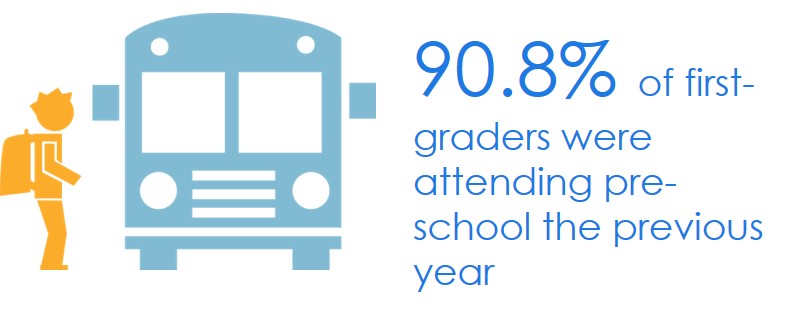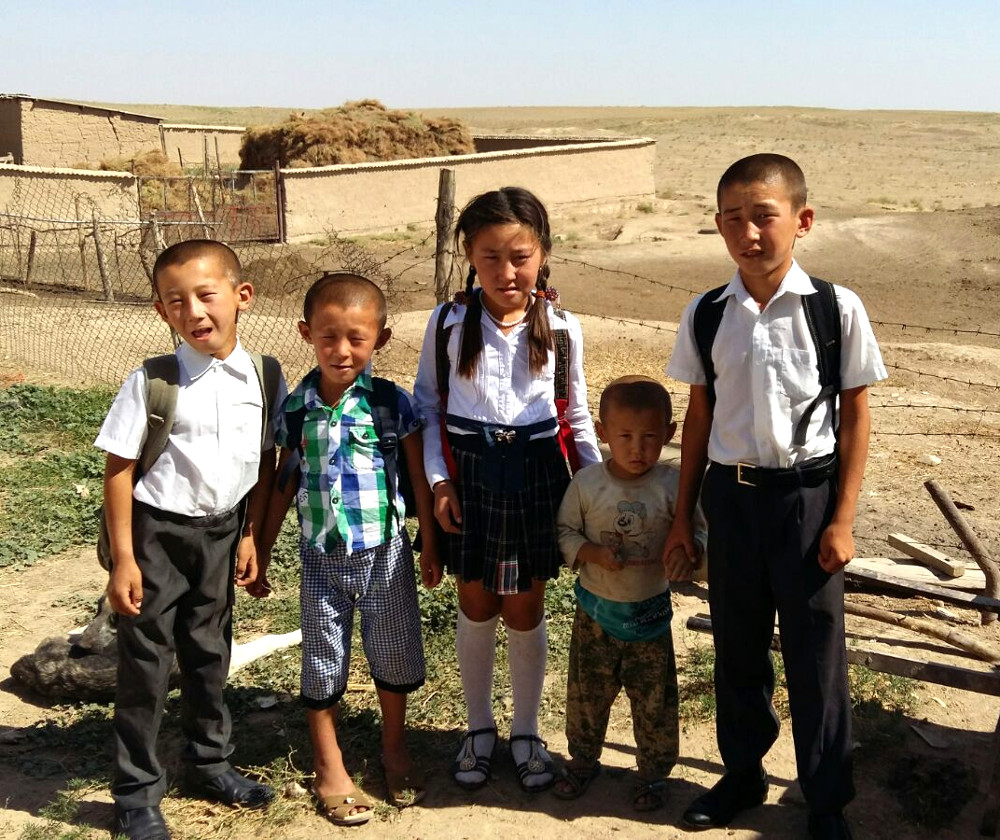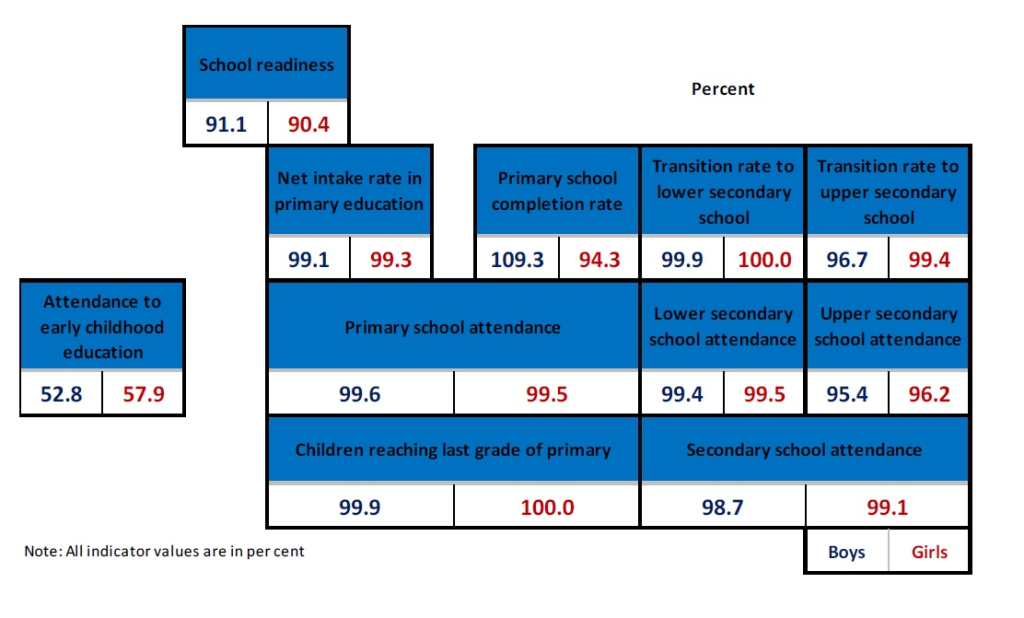Literacy is estimated by the respondent’s ability to read a short simple statement or on the basis of primary school attendance at least.
In Kazakhstan, the literacy of young women aged 15-24 years reaches absolute 100.0 percent. Since the literacy is universal, there are no differences in literacy rates by background characteristic of women.

Development and improvement of pre-school education is a priority of Kazakhstan’s state policy. General pre-school educational programmes are developed based on the State Compulsory Educational Standard. On this basis, public and private pre-school facilities provide pre-school education to children from 2-3 years to 6-7 years of age.

In Kazakhstan, in general, 90.8 percent of children who are currently attending the first grade of primary school were attending pre-school the previous year. Socio-economic status of the household seems to play a positive role in preparing children for school: 96.7 percent of children living in the richest households attended pre-school facilities in the previous year, while the corresponding figure among children in the poorest households was only 88.3 percent.
The percentage of 5-6-year-old children who attend pre-school was 47.8 percent and primary school – 36.1 percent. The adjusted net attendance ratio in pre-primary education is 84.0 percent. At the same time, the highest proportion of children aged 5 years attend pre-school (68.1 percent), and only 2.6 percent attend primary school; among children aged 6 years, approximately one third of children attend pre-school facilities (28.9 percent) and 67.4 percent attend primary school.
In accordance with the Law "On Education" in the Republic of Kazakhstan (as amended in April 2016), the education system includes the following levels of education:
pre-school education
primary education
lower secondary education
secondary education (upper secondary education, technical and professional education)
post-secondary education
higher education
postgraduate study
In Kazakhstan, children enroll in Grade 1 at age of six or seven years, and every parent has the right to determine at what age to send their child to school.

In Kazakhstan, children enroll in Grade 1 at age of six or seven years, and every parent has the right to determine at what age to send their child to school.
In Kazakhstan in the 2015-2016 academic year among children of primary school entry age (full 7 years) 99.2 percent of the children attended the first grade of primary school; and of children that started school at age 6 years – 67.4 percent of children attended the first grade.
The primary school (adjusted) net attendance ratio for children aged 7-10 years was 99.5 percent. The secondary school (adjusted) net attendance ratio (NAR) for children aged 11-17 years was 98.9 percent. The lower secondary school (adjusted) net attendance ratio (NAR) for children aged 11-15 years was 99.4 percent. The upper secondary school (adjusted) NAR for children aged 16-17 years was 95.7 percent, which is slightly less than lower secondary school (adjusted) NAR.
In general, in Kazakhstan, the Gender Parity Index (GPI) for primary, lower secondary education and secondary education is 1.00, indicating no difference in the attendance to these school levels by girls and boys with the exception of the GPI for upper secondary education, which is 1.01.
There are no GPI differences by background characteristics. The GPI for upper secondary school (adjusted) NAR indicates that there is a gender gap between upper secondary school attendance of girls and boys in urban areas and also between girls and boys in rural areas (1.03 and 0.98 percent respectively).
